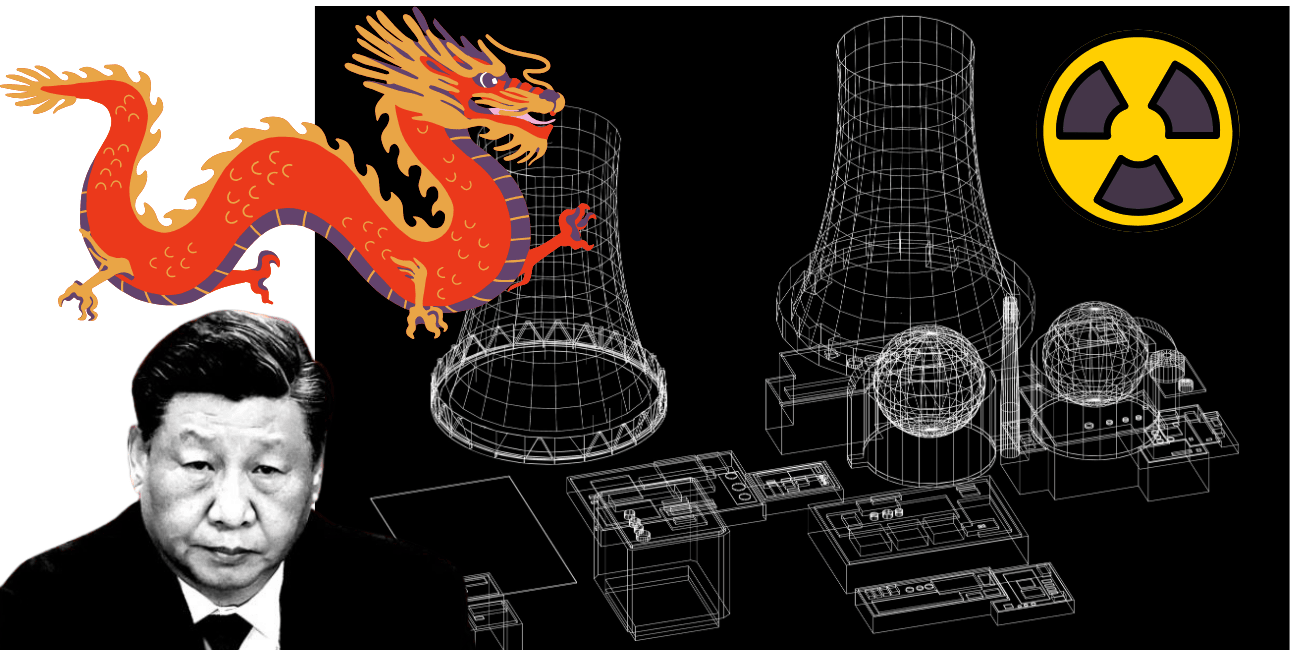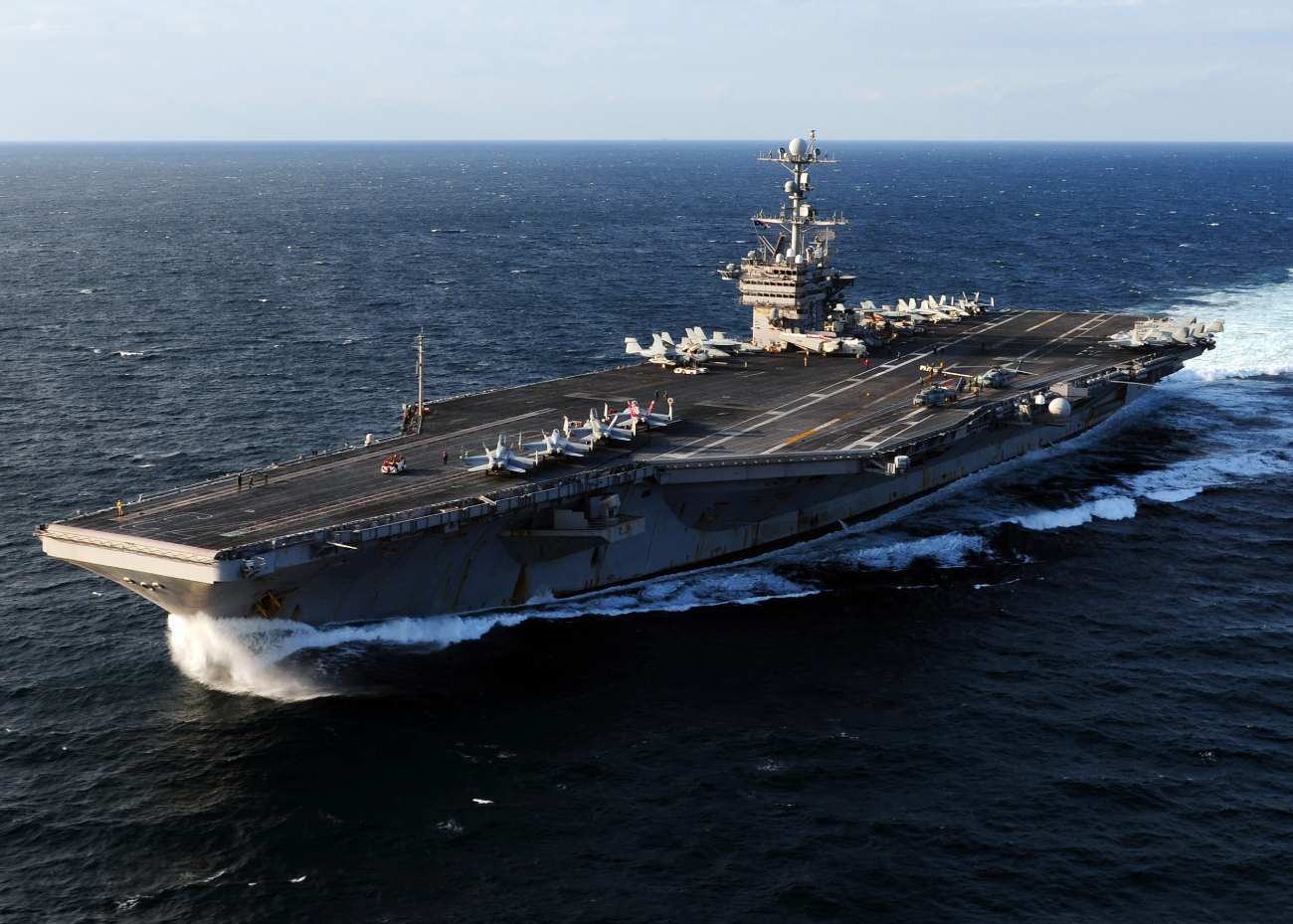China’s Nuclear-Powered Aircraft Carrier On Cards? Satellite Image Shows Prototype Reactor For Warship

China has taken a significant step toward its naval ambitions by developing a land-based prototype nuclear reactor for a large surface warship, suggesting it may be constructing its first nuclear-powered aircraft carrier.
This revelation, reported by the Associated Press based on research from the Middlebury Institute of International Studies in California, marks the first confirmation that China is advancing its work on a nuclear power plant for an aircraft carrier.
This is a significant step toward China’s ambitions in naval nuclear propulsion.
The ‘Dragon Might’ Project
The project at Leshan is known as ‘the Longwei’ or ‘Dragon Might’ Project. Official documents also refer to it as ‘the Nuclear Power Development’ Project.
The project’s ‘national defense designation,’ classified as ‘secret,’ further reinforces the conclusion that this reactor is a prototype for a next-generation aircraft carrier.

Rumors of China planning a nuclear-powered aircraft carrier have circulated for some time. Still, research by the Middlebury Institute of International Studies in California provides the first confirmation that China is indeed developing a nuclear-powered propulsion system for a carrier-sized warship.
Location Of The Facility
Researchers concluded in a detailed 19-page report that a prototype reactor for naval propulsion was being constructed in the mountains of Mucheng township, located about 70 miles (112 kilometers) southwest of Chengdu, the provincial capital of Sichuan.
Documents suggest the reactor will soon be operational. It is housed in a newly built facility at the site known as Base 909. According to the analysis, this site also contains six other reactors, some of which are operational, decommissioned, or still under construction.
Base 909 is managed by the Nuclear Power Institute of China, a subsidiary of the China National Nuclear Corporation responsible for reactor engineering research and testing.
AfriPrime App link: FREE to download...
Uncovering China’s Reactor Prototype
Middlebury researchers initially investigated the mountainous region near Leshan in southwestern Sichuan province because they suspected that China might be building a reactor for producing weapons-grade plutonium or tritium.
However, a detailed analysis of satellite imagery, project tenders, personnel records, and environmental impact data led to the conclusion that China is, in fact, constructing a prototype reactor for a large warship.
Even a citizen’s complaint about noisy construction and excessive dust contributed to this finding.
Satellite images from 2020 to 2023 reveal the demolition of homes and the construction of water intake infrastructure linked to the reactor site.
According to researchers, contracts for steam generators and turbine pumps suggest the project involves a pressurized water reactor with a secondary circuit—features commonly associated with naval propulsion reactors.
The AP report notes that documents indicate China’s 701 Institute – officially known as China Ship Research and Design Center, responsible for aircraft carrier development, procured reactor equipment specifically intended ‘for installation on a large surface warship.’
“The reactor prototype at Leshan provides the first concrete evidence that China is indeed developing a nuclear-powered aircraft carrier,” said Jeffrey Lewis, a professor at Middlebury and one of the researchers on the project.
Nuclear-Powered Carriers Around The World
If successful, this move would place China among the elite naval powers operating nuclear-powered aircraft carriers, currently held only by the United States and France.
The US Navy, with its 11 nuclear-powered carriers, has unmatched global reach, enabling it to maintain multiple strike groups deployed globally, including in the Indo-Pacific.

In 2017, the US Navy operated 81 nuclear-powered vessels, including 11 aircraft carriers and 70 submarines (18 SSBN/SSGN and 52 SSN), all powered by 92 reactors.
The French Navy’s Charles de Gaulle (CDG) remains the only nuclear-powered aircraft carrier outside the US Navy’s fleet.
From Liaoning To Fujian: China’s Expanding Naval Capabilities
China’s naval ambitions are steadily progressing. The nation’s first aircraft carrier, the Liaoning, was commissioned in 2012 after being repurposed from a Soviet vessel. Its second carrier, the Shandong, was built domestically but followed Soviet designs. Both carriers use a ‘ski-jump’ launch system featuring a ramp at the end of a short runway to assist planes in taking off.
The Fujian, launched in 2022, is China’s first indigenously designed carrier. Unlike its predecessors, it employs an advanced electromagnetic launch system similar to that of U.S. carriers. All three of these carriers are conventionally powered.
Even before sea trials began for the Fujian in March, Yuan Huazhi, political commissar for China’s People’s Liberation Army Navy (PLAN), confirmed that construction had begun on a fourth carrier. While he suggested that it would soon be announced whether this carrier would be nuclear-powered, no official announcement has been made yet.
Despite the advancements in conventional carrier technology, the potential introduction of a nuclear-powered carrier would mark a major leap in China’s naval capabilities.
The Nuclear Submarine Dimension
Furthermore, According to a Center for Strategic & International Studies (CSIS) report, China now operates the world’s largest maritime fighting force, with 234 warships compared to the US Navy’s 219. However, the U.S. retains unquestioned dominance in nuclear submarine capabilities.
The United States Navy operates around 66 nuclear-powered submarines, while China currently has a fleet of 48 conventional submarines and 12 nuclear-capable submarines.
A 2023 Department of Defense report predicts China will expand its submarine force to 80 by 2035, although most of these will not be nuclear-powered. This rapid buildup of China’s naval capabilities has positioned the People’s Liberation Army Navy (PLAN) to potentially surpass the U.S. Navy in key areas of maritime power sooner than expected.
Challenging US Dominance
While the U.S. Navy remains the leader in nuclear-powered vessels, China’s push to develop a nuclear-powered aircraft carrier and expand its nuclear submarine fleet underscores its determination to establish maritime dominance, particularly in the Indo-Pacific. With these advancements, the People’s Liberation Army Navy (PLAN) is positioned to challenge the U.S. Navy and potentially surpass it in key areas in the near future.
AfriPrime App link: FREE to download...
- Questions and Answers
- Opinion
- Motivational and Inspiring Story
- Technology
- Live and Let live
- Focus
- Geopolitics
- Military-Arms/Equipment
- Segurança
- Economy
- Beasts of Nations
- Machine Tools-The “Mother Industry”
- Art
- Causes
- Crafts
- Dance
- Drinks
- Film/Movie
- Fitness
- Food
- Jogos
- Gardening
- Health
- Início
- Literature
- Music
- Networking
- Outro
- Party
- Religion
- Shopping
- Sports
- Theater
- Health and Wellness
- News
- Culture

